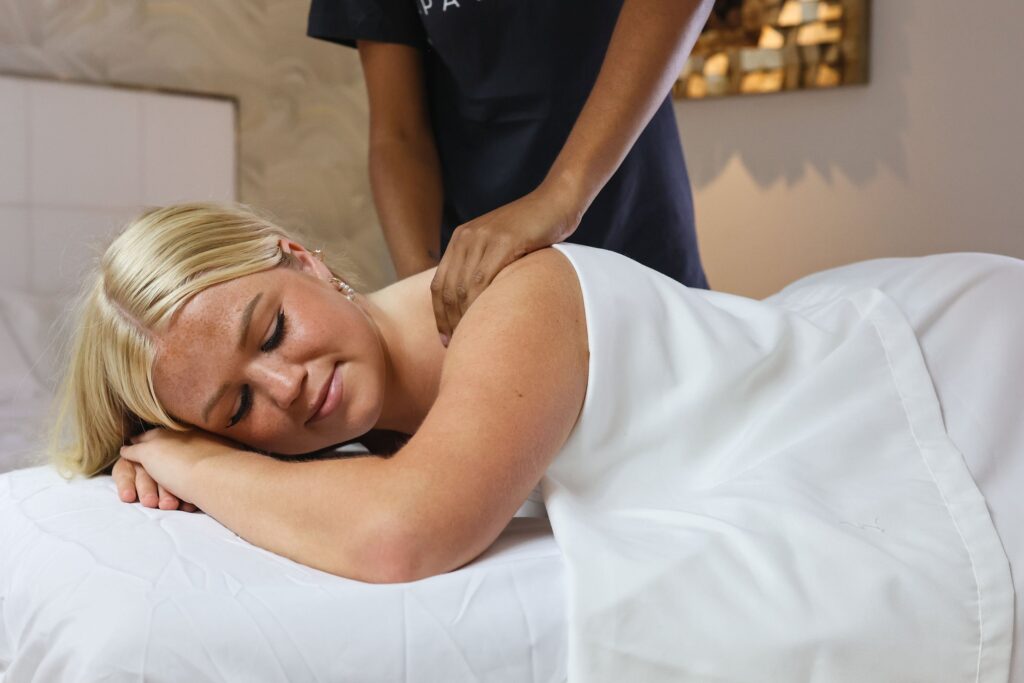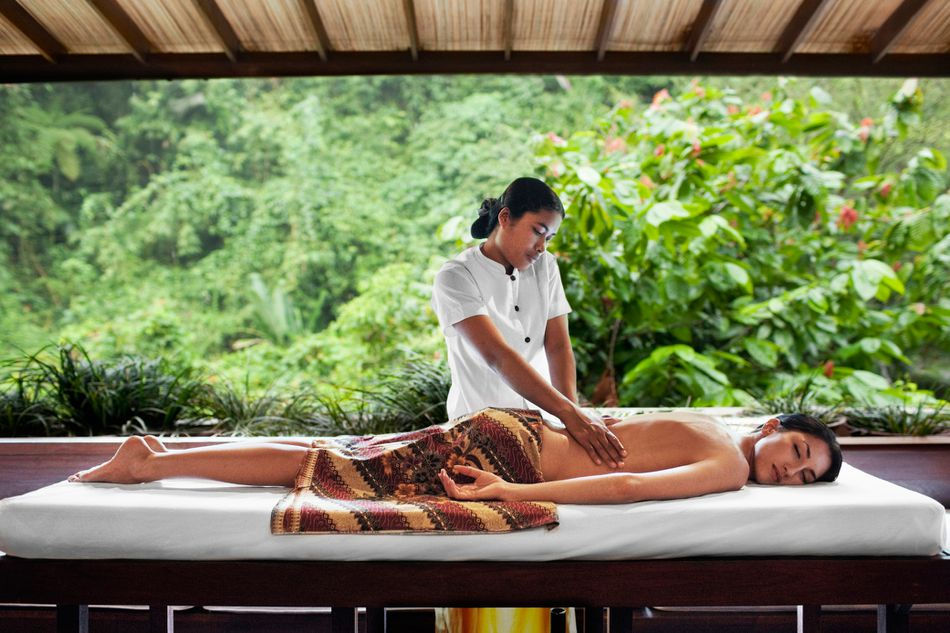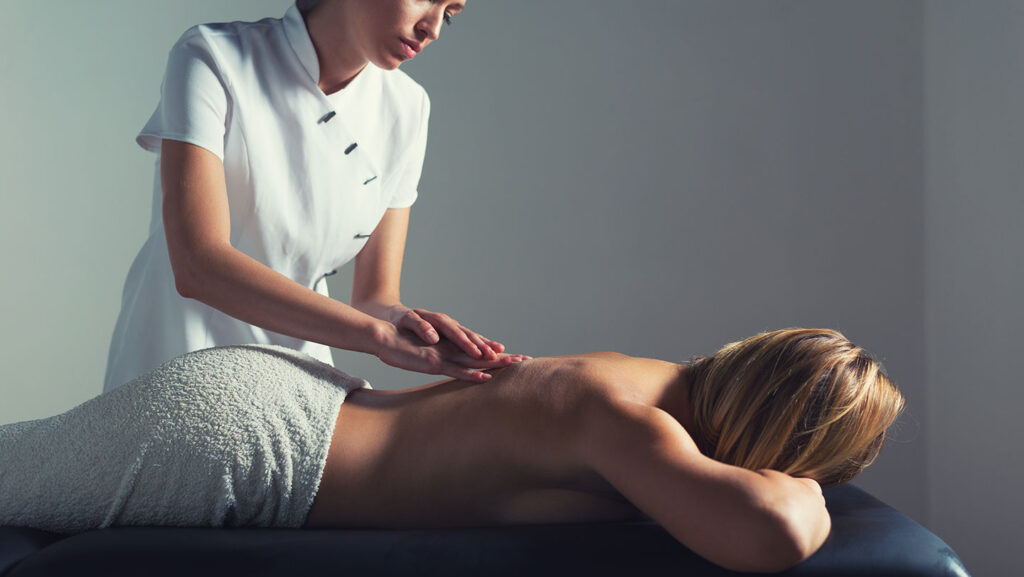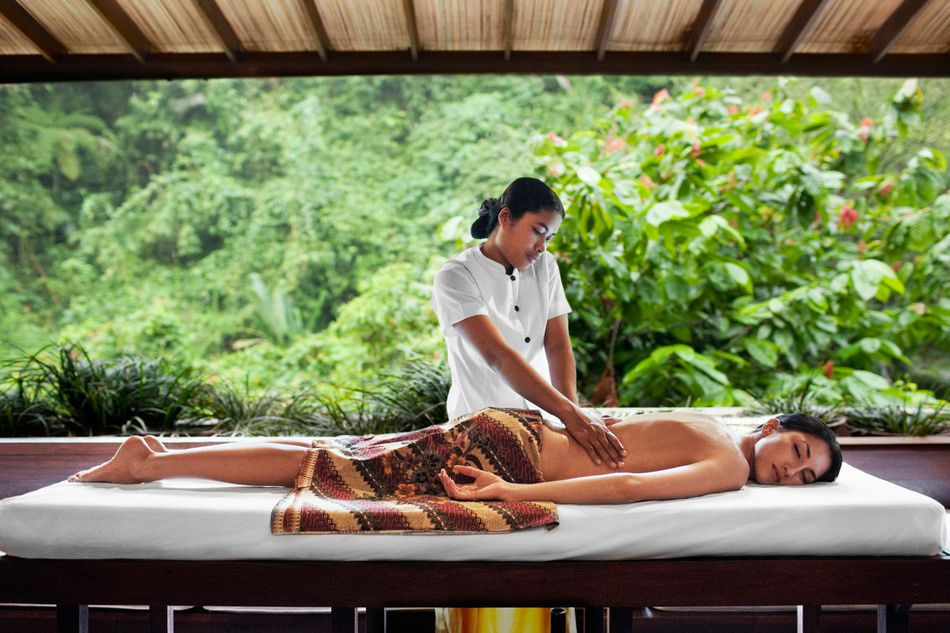Imagine being able to unwind and relax while every inch of your body is pampered and rejuvenated. A full body massage offers just that, providing a complete and indulgent experience that rejuvenates both the mind and body. From head to toe, skilled hands work their magic, kneading away tension and promoting a sense of calm. But what exactly is included in a full body massage? In this article, we will explore the different techniques used, the benefits of each, and what you can expect during this ultimate pampering session. Get ready to embark on a journey of blissful relaxation and discover the wonders of a full body massage.
What’s Included In A Full Body Massage
A full body massage is a fantastic way to relax and rejuvenate your body and mind. It involves the manipulation of the soft tissues in your body, including muscles, tendons, and ligaments, to promote relaxation, relieve tension, and improve overall well-being. In this comprehensive article, we will explore the different types of full body massages, the benefits they offer, how to prepare for a massage, what to expect during a session, the duration of a massage, the techniques used, the areas of the body covered, the equipment and products utilized, post-massage care, and the cost of a full body massage. So, let’s get started!
Different types of full body massages
There are various types of full body massages, each with its own unique techniques and focus. Here are some popular types of full body massages you can choose from:
Swedish massage
The Swedish massage is a gentle full body massage that utilizes long, gliding strokes, kneading, and circular motions to relax and energize the body. It is an excellent choice for those seeking relaxation and stress relief.
Deep tissue massage
If you have chronic muscle tension or pain, a deep tissue massage can be highly beneficial. This massage uses slow, deep strokes and targeted pressure to release muscle knots and adhesions, promoting deep relaxation and pain relief.
Thai massage
Originating from Thailand, Thai massage combines acupressure, gentle stretching, and yoga-like poses to increase flexibility, relieve muscle tension, and improve energy flow throughout the body. It is performed on a mat on the floor, and the therapist uses their hands, thumbs, elbows, and feet to apply pressure.
Hot stone massage
For a truly indulgent experience, consider a hot stone massage. Smooth, heated stones are placed on specific areas of your body, while the therapist uses them to massage and apply gentle pressure. This type of massage promotes deep relaxation and can be especially beneficial for those with muscle stiffness and tension.
Aromatherapy massage
An aromatherapy massage combines the power of touch with the therapeutic benefits of essential oils. The massage therapist incorporates essential oils into the massage oil or lotion, enhancing the massage experience and providing additional relaxation and healing benefits.
Sports massage
Sports massage is designed to help athletes prevent injuries, recover faster, and enhance performance. It focuses on specific muscle groups and uses various techniques like stretching, compression, and deep tissue work to alleviate tension, increase flexibility, and promote optimal muscle function.
Pregnancy massage
Pregnancy is a time of significant physical and emotional changes, and a pregnancy massage can provide tremendous relief and relaxation. This gentle massage is specifically tailored to the needs of pregnant women, addressing common discomforts like back pain, swelling, and fatigue.
Shiatsu massage
Originating from Japan, shiatsu massage applies pressure to specific points on the body to stimulate energy flow and promote overall well-being. It is performed with the therapist’s fingers, palms, and thumbs, and it can help alleviate muscle tension, reduce stress, and improve circulation.
Reflexology massage
Reflexology focuses on specific reflex points on the feet, hands, and ears that correspond to different organs and systems in the body. By applying pressure to these points, a reflexology massage can help restore balance, improve circulation, and promote relaxation.
Indian head massage
Indian head massage is a rejuvenating and relaxing massage that focuses on the head, neck, and shoulders. It involves gentle movements, kneading, and acupressure techniques to relieve tension, reduce headaches, and promote mental clarity.
This image is property of qph.cf2.quoracdn.net.
Benefits of a full body massage
A full body massage offers a multitude of benefits, both physical and mental. Let’s explore some of the key advantages you can expect to experience:
Relaxation and stress relief
One of the primary benefits of a full body massage is deep relaxation and stress relief. The soothing touch and gentle strokes help calm the nervous system, reduce anxiety, and promote a sense of tranquility and well-being.
Improved blood circulation
During a full body massage, the therapist’s skilled hands stimulate blood flow to various parts of the body. This increased circulation delivers more oxygen and nutrients to the muscles and organs, promoting overall health and vitality.
Pain relief and muscle relaxation
Full body massages are excellent for relieving muscle tension and pain. The therapist applies various techniques to release knots, trigger points, and tight muscles, promoting relaxation, flexibility, and improved range of motion.
Enhanced flexibility and range of motion
Regular full body massages can significantly improve your flexibility and range of motion. The gentle stretching, kneading, and pressure applied during the massage help lengthen and loosen tight muscles, allowing for easier movement and reduced risk of injuries.
Detoxification and improved lymphatic drainage
Through the manipulation of soft tissues, a full body massage can stimulate the lymphatic system, encouraging the elimination of toxins and waste products from the body. This detoxification process leaves you feeling rejuvenated and revitalized.
Boosted immune system
Studies have shown that full body massages can have positive effects on the immune system. The combination of relaxation, stress reduction, improved circulation, and lymphatic drainage helps support a healthy immune response, keeping you better equipped to fight off infections and illnesses.
Improved sleep quality
If you struggle with insomnia or poor sleep quality, a full body massage can help. The relaxation and calming effects of the massage can promote better sleep patterns, leading to improved overall sleep quality and a more restful night.
Reduced anxiety and depression
Regular full body massages can help alleviate the symptoms of anxiety and depression. The release of endorphins during the massage, combined with the calming effects on the nervous system, can improve mood, reduce feelings of sadness, and enhance general well-being.
Increased energy levels
Feeling low on energy? A full body massage can give you a much-needed energy boost. By reducing muscle tension, improving sleep quality, and promoting relaxation, a massage can leave you feeling invigorated and more energized.
Overall well-being and balance
Perhaps the most significant benefit of a full body massage is the overall sense of well-being and balance it provides. Taking time to care for yourself, both physically and mentally, can have far-reaching effects on your health and happiness.
Preparation for a full body massage
To make the most of your full body massage experience, it’s essential to prepare beforehand. Here are some tips for a smooth and enjoyable massage session:
Appointment scheduling
Choose a reputable massage therapist or spa that offers full body massages. Schedule your appointment in advance, ensuring it fits into your schedule and allows you ample time for relaxation.
Discussing medical history and concerns
Before your massage, inform the therapist of any medical conditions, injuries, or specific concerns you may have. This allows them to tailor the massage to your needs and ensure your safety and comfort.
Hygiene and cleanliness
Take a shower or bath before your massage appointment, ensuring you are clean and fresh. Good personal hygiene not only enhances your comfort during the massage but also shows respect for your massage therapist.
Dressing appropriately
Wear comfortable and loose-fitting clothing to your massage appointment. Most full body massages are performed with the client undressed, but you will be appropriately draped with sheets or towels throughout the session to ensure your privacy.
Avoiding heavy meals and alcohol
It’s best to avoid heavy meals and alcohol consumption immediately before your massage. A full stomach may lead to discomfort, and alcohol can interfere with the therapeutic effects of the massage.
Preparing mentally and emotionally
Take a few moments before your massage to relax and clear your mind. Let go of any stress or worries, and approach the session with an open and receptive mindset.
Arriving on time
Arrive at your massage appointment on time or a few minutes early. This allows you to complete any necessary paperwork, use the restroom if needed, and settle into a calm state before the massage begins.

This image is property of images.squarespace-cdn.com.
What to expect during a full body massage
Knowing what to expect during a full body massage can help you relax and fully enjoy the experience. Here’s a breakdown of what typically happens during a session:
Initial consultation and assessment
Before the massage begins, the therapist will have a brief consultation with you to discuss your specific needs, any areas of concern, and any injuries or medical conditions. This information helps them tailor the massage to your unique requirements.
Privacy and comfort
You will be shown to a private treatment room where you can undress to your comfort level. Your privacy will be respected at all times, and the therapist will step out of the room to allow you to prepare for the massage.
Undressing and draping
For a full body massage, it is customary to undress completely or leave on your underwear. You will be provided with a sheet or towel to drape over your body to maintain your modesty throughout the session. The therapist will uncover only the part of your body they are working on at any given time.
Choice of massage oil or lotion
The therapist may offer you a choice of massage oil or lotion. Different oils and lotions may have specific properties or scents that can enhance the massage experience, so feel free to express your preferences.
Adjusting the massage pressure
During the massage, the therapist will check in with you to ensure the pressure they are applying is comfortable for you. Feel free to communicate your preferences and any areas that require more or less pressure.
Communication with the massage therapist
Open communication with your massage therapist is crucial. If you have any questions, concerns, or if something feels uncomfortable during the massage, don’t hesitate to speak up. Your therapist is there to ensure your comfort and well-being.
Duration of the massage
The duration of a full body massage can vary depending on the type of massage and your personal preferences. Most sessions typically last between 60 to 90 minutes, allowing enough time for a comprehensive treatment.
Techniques used
The massage therapist will use a combination of techniques specific to the type of massage you’ve chosen. These techniques may include long, gliding strokes, kneading, acupressure, stretching, and more. The therapist’s skilled hands will work on various parts of your body, aiming to relieve tension, enhance relaxation, and promote overall wellness.
Targeted areas and focus
The therapist may focus on specific areas of your body that require more attention or have particular issues. For example, if you have a tension headache, the therapist may pay extra attention to your neck and shoulders. You can discuss your preferences before the massage to ensure your needs are met.
Sensations and feelings
During the massage, you may experience a range of sensations and feelings. These can include warmth, tingling, relaxation, and occasionally mild discomfort as the therapist works through knots or tight muscles. Remember to breathe deeply and communicate with your therapist to ensure your comfort throughout the session.
Duration of a full body massage
The duration of a full body massage can vary depending on several factors. Here are some considerations when it comes to the duration of your massage:
Typical duration
A typical full body massage session lasts between 60 to 90 minutes. This timeframe allows the therapist enough time to address various areas of your body and provide a comprehensive treatment.
Shorter massage options
If you have time constraints or prefer a shorter massage, some spas or massage therapists offer 30-minute or 45-minute sessions. While these shorter sessions may not cover the entire body in detail, they can still provide great benefits and targeted relief for specific areas.
Extended massage options
For those looking for an extended massage experience, some spas offer 2-hour or longer sessions. These extended sessions are ideal if you have specific areas that require extra attention or if you simply want to immerse yourself in complete relaxation.
Frequency and consistency
The frequency of your full body massages depends on your individual needs and preferences. Some individuals benefit from a weekly massage to manage chronic pain or high levels of stress, while others may opt for a monthly or bi-monthly session to maintain physical and mental well-being. Consistency is key when it comes to experiencing the long-term benefits of a full body massage.

This image is property of static.wixstatic.com.
Massage techniques used in a full body massage
A full body massage incorporates various massage techniques to achieve overall relaxation and benefit the body. Here are some commonly used techniques you may encounter during a full body massage:
Effleurage
Effleurage involves long, gliding strokes performed with the palms or fingertips of the hands. This technique is used to warm up the muscles, spread the massage oil, and relax the body.
Petrissage
Petrissage involves kneading, squeezing, and rolling movements of the soft tissues. This technique helps release muscle tension, promote circulation, and improve flexibility.
Friction
Friction involves deep, circular movements performed with the fingertips, thumbs, or palms. This technique helps break up muscle adhesions and adhesions, promoting pain relief and improved mobility.
Tapotement
Tapotement involves rhythmic tapping or percussion movements using the sides of the hands or the fingertips. This technique can invigorate the body, stimulate nerve endings, and improve circulation.
Vibration
Vibration involves shaking or trembling movements performed with the fingertips or palms. This technique can help relax tense muscles, release nerve entrapment, and improve blood flow.
Stretching
Stretching techniques are commonly incorporated into a full body massage to improve flexibility and range of motion. The therapist may gently stretch your muscles to relieve tension and promote relaxation.
Joint mobilization
Joint mobilization involves moving the joints through their natural range of motion to improve joint health and flexibility. This technique is particularly beneficial for those with joint stiffness or limited mobility.
Acupressure
Acupressure involves the application of pressure to specific points on the body to stimulate energy flow and promote healing. This technique is often used in combination with other massage techniques to address specific concerns or imbalances.
Trigger point therapy
Trigger point therapy focuses on the release of trigger points, which are tight knots or bands within the muscles that can cause referred pain and discomfort. The therapist applies pressure to these points to alleviate pain and restore normal muscle function.
Myofascial release
Myofascial release involves the gentle stretching and manipulation of the connective tissue (fascia) surrounding the muscles. This technique can help release tension, improve mobility, and promote relaxation.
Areas of the body covered in a full body massage
During a full body massage, various areas of your body will be targeted and worked on. Here are the typical areas that are covered during a full body massage:
Back and shoulders
The back and shoulders often carry a significant amount of tension and stress. These areas are typically a primary focus during a full body massage, as the therapist uses various techniques to release knots, relax the muscles, and promote overall well-being.
Neck and head
The neck and head are common areas of tension and discomfort, especially for those who spend long hours sitting at a desk or working on electronic devices. A full body massage often includes techniques that address these areas, relieving headaches, reducing neck pain, and promoting relaxation.
Arms and hands
The arms and hands can accumulate tension, especially if you engage in repetitive activities or have a job that requires extensive computer use. By incorporating techniques like kneading and deep strokes, a full body massage can help relieve muscle tightness, improve circulation, and reduce discomfort in these areas.
Legs and feet
The lower body can also hold a significant amount of tension, especially for those who sit or stand for long periods. A full body massage often includes targeted work on the legs and feet to alleviate muscle tightness, reduce swelling, and promote overall relaxation.
Abdomen and chest
The abdomen and chest are often neglected areas when it comes to massage, but they can benefit greatly from therapeutic touch. Gentle circular motions and kneading techniques can be used to enhance digestion, release tension in the chest muscles, and promote relaxation in these areas.
Glutes and hips
The glutes and hips can harbor tension and tightness, especially for those who lead sedentary lifestyles or engage in activities that strain these areas. A full body massage may include specific techniques to address these areas, helping to relieve discomfort and promote flexibility.

This image is property of goodspaguide.co.uk.
Equipment and products used in a full body massage
To provide a comfortable and effective full body massage, therapists utilize various equipment and products. Here are some common items used during a massage session:
Massage table or mat
A massage table or mat provides a comfortable surface for you to lie down on during the massage. The table or mat may be padded and adjustable to ensure your comfort and the therapist’s ease of access to different parts of your body.
Towels or sheets
Towels or sheets are used to cover and drape your body during the massage to ensure your privacy and maintain a comfortable temperature. The therapist may uncover only the specific area being worked on while keeping the rest of your body covered.
Massage oils or lotions
Massage oils or lotions are used to reduce friction between the therapist’s hands and your skin, allowing for smooth and fluid movements during the massage. These oils or lotions may have additional therapeutic properties, such as essential oils for aromatherapy.
Heated stones or herbal compresses
In hot stone massages, smooth, heated stones are used to apply gentle pressure and heat to specific areas of your body, promoting relaxation and improved blood flow. Herbal compresses, on the other hand, are heated packs containing a blend of herbs that are used to provide warmth and relaxation during the massage.
Essential oils for aromatherapy
Aromatherapy involves the use of essential oils to enhance the massage experience and promote specific therapeutic effects. Essential oils are derived from plants and can have a range of relaxing, invigorating, or calming properties.
Music or soothing sounds
To create a soothing and relaxing ambiance, therapists often play soft music or soothing sounds during the massage. This helps promote relaxation, mask any external noises, and further enhance the therapeutic benefits of the massage.
Post-massage care and recommendations
After your full body massage, it’s essential to take care of your body and mind to maximize the benefits and prolong the effects. Here are some post-massage care recommendations:
Hydration
Drink plenty of water after your massage to help flush out any toxins that may have been released during the session. Staying hydrated also helps prevent any post-massage soreness and promotes overall well-being.
Rest and relaxation
Allow yourself time to rest and relax after the massage. Find a quiet, calm space where you can continue to enjoy the relaxation and tranquility achieved during the session.
Gentle stretching
In the hours following your massage, engage in gentle stretching exercises to maintain and extend the benefits of the massage. Stretching can help improve flexibility, prevent muscle stiffness, and promote an overall sense of well-being.
Self-care rituals
Incorporate self-care rituals into your routine to continue nurturing your body and mind. This can include activities like taking warm baths, practicing mindfulness or meditation, and engaging in activities that bring you joy and relaxation.
Maintaining a healthy lifestyle
A full body massage is just one aspect of a healthy lifestyle. To experience long-term benefits, maintain a balanced diet, engage in regular exercise, get enough sleep, and manage stress effectively.

This image is property of a.storyblok.com.
Cost of a full body massage
The cost of a full body massage can vary depending on several factors. Here are some considerations when it comes to the cost of a full body massage:
Factors influencing the cost
The cost of a full body massage can be influenced by various factors, including the location of the spa or massage therapist, the level of experience and expertise of the therapist, the duration of the massage, and any additional services or enhancements included in the session.
Different pricing structures
Different spas or massage therapists may have different pricing structures. Some charge a flat rate for a specific duration of the massage, while others may charge per minute.
Additional charges or discounts
Additional charges may apply for any added services, such as hot stone therapy, aromatherapy, or specialized techniques. Some spas or therapists may offer discounts for package deals or regular clients.
Insurance coverage
In some cases, insurance plans may cover the cost of a full body massage if it is performed for medical reasons or as part of a prescribed treatment plan. Check with your insurance provider to see if massage therapy is covered under your plan.
Tips and gratuities
It is common to tip your massage therapist as a sign of appreciation for their service. The amount typically ranges from 15% to 20% of the total cost of the massage.
Value for money
When considering the cost of a full body massage, it’s essential to assess the value you receive in return. A professional and skilled massage therapist can provide immense physical and mental benefits that greatly outweigh the financial cost.
In conclusion, a full body massage is an excellent investment in your physical and mental well-being. With various types to choose from, each offering unique techniques and focuses, you can tailor your massage experience to your specific needs. Whether you seek relaxation, pain relief, improved circulation, or overall balance, a full body massage can provide numerous benefits. By preparing for your massage, knowing what to expect, and taking care of yourself afterward, you can maximize the effects and continue to enjoy the benefits long after the session is over. So go ahead, treat yourself to a rejuvenating full body massage and experience the ultimate relaxation and well-being it has to offer.
